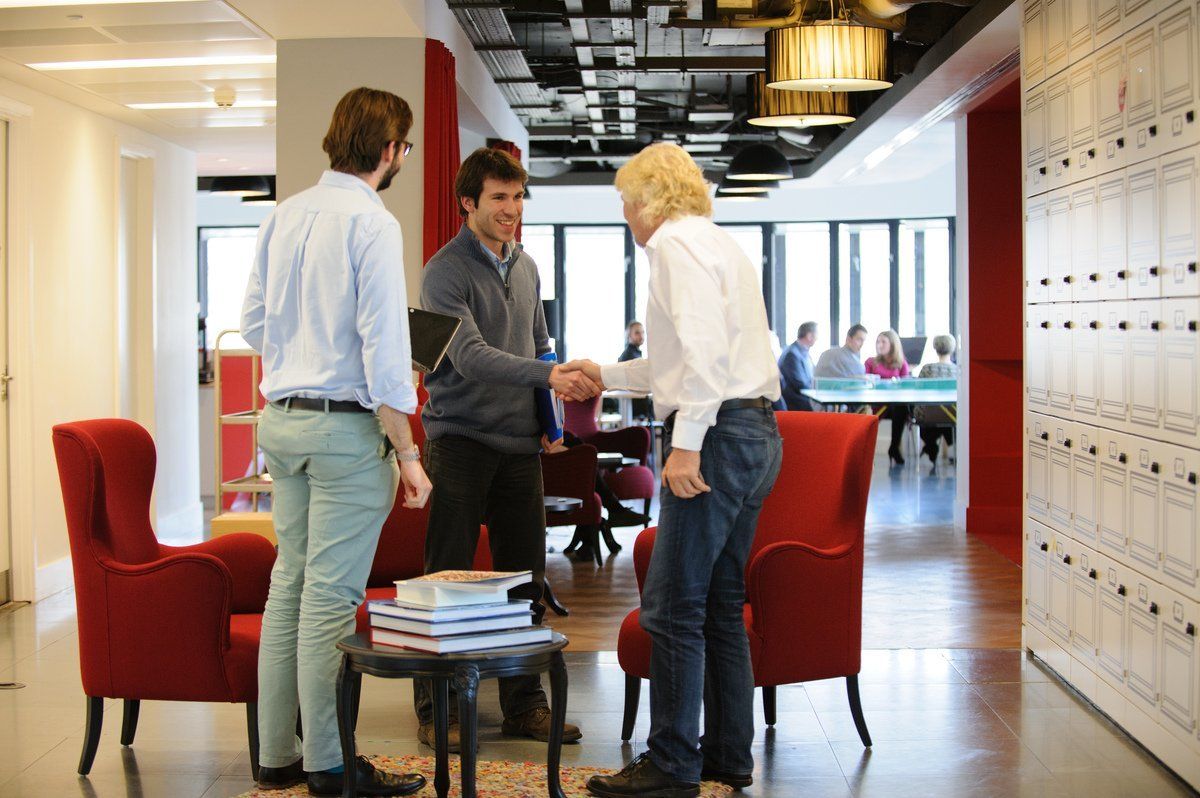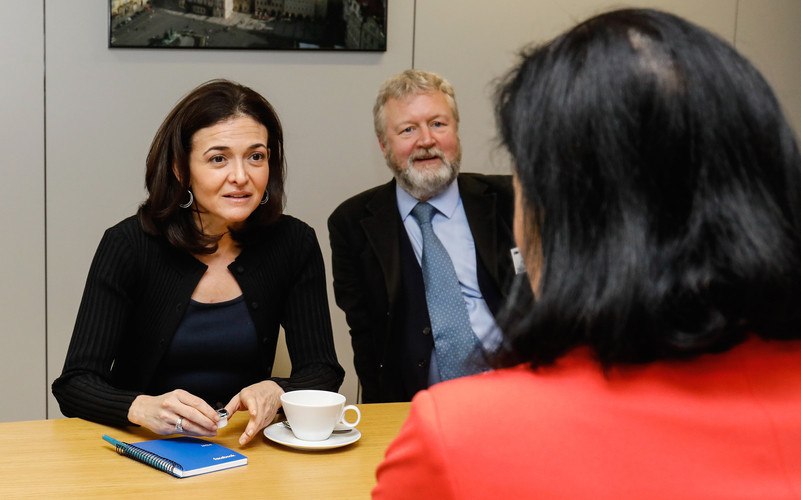Anyone can be busy, but being busy doesn’t necessarily mean you’re using your time wisely or effectively. As Tim Ferriss advises in his best-selling book The 4-Hour Work Week: “Focus on being productive instead of busy.” Why? Because emails and meetings might help you check off items on your to-do list, but are really just time-wasting distractions that don’t directly help you accomplish what you want to achieve.
Leaders, CEOs, and entrepreneurs who are at the top of their game know how to achieve what they want in less time than others. They know that time management is a crucial skill in business and simply can’t be an issue, because how you spend your time directly influences the success of your company.
So what can we learn from the world’s most productive leaders? Here are 11 tips worth trying out.
1. Set Strict Limits On Meetings
If there’s one thing business leaders loathe more than anything else, it’s extraneous meetings. They try to limit them as much as possible, or simply avoid them altogether.
In order to keep meetings brief, Virgin Group founder and CEO Richard Branson conducts meetings standing up because it’s a “quicker way of getting down to business, making a decision and sealing the deal.”
“A lot of time is wasted in meetings. Agendas get forgotten, topics go amiss, and people get distracted. While some circumstances call for workshops and more elaborate presentations, it’s very rare that a meeting on a single topic should need to last more than 5-10 minutes,” he writes on his blog.

Evernote CEO Chris O’Neill says his team used to meet bi-weekly to discuss status updates with dozens of people until he realized it was wasting everyone’s time.
“Now, I limit meetings to eight people and maintain a ‘no agenda, no attendance’ policy: If the meeting host doesn’t share an agenda beforehand that makes it clear what the meeting is for and what they need, I don’t attend. For the meetings that I do attend, I make sure there’s a designated notetaker who can later share their notes and action items afterward,” O’Neill writes.
Facebook’s Sheryl Sandberg has a rather analog way of handling meetings. As Miguel Helft writes for Fortune:
“Her days are a flurry of meetings that she runs with the help of a decidedly non-digital spiral-bound notebook. On it, she keeps lists of discussion points and action items. She crosses them off one by one, and once every item on a page is checked, she rips the page off and moves to the next. If every item is done 10 minutes into an hour-long meeting, the meeting is over.”

Randy Komisar, a partner at Kleiner Perkins Caufield Byers (KPCB), is also ruthless when it comes to meetings and will usually leave a meeting if it’s running overtime.
“I leave meetings at their allotted end time regardless of whether they are finished. I do not reschedule an appointment for a more important one unless it is an emergency. If an email will do, I don’t make a call; if a call will do, I don’t have a meeting; if a 30-minute meeting is sufficient, I don’t schedule an hour,” Komisar says
Steve Jobs was similarly severe when it came to meetings, preferring simplicity: small groups of smart people.
Ken Segall, a close collaborator with Jobs for over a decade, writes for FastCoDesign about one particular weekly meeting during which Jobs stopped mid-sentence to kick someone out.
“His eyes locked on to the one thing in the room that didn’t look right. Pointing to Lorrie, he said, ‘Who are you? Lorrie was a bit stunned to be called out like that, but she calmly explained that she’d been asked to attend because she was involved with some of the marketing projects we’d be discussing. Steve heard it. Processed it. Then he hit her with the Simple Stick. I don’t think we need you in this meeting, Lorrie. Thanks, he said. Then, as if that diversion had never occurred — and as if Lorrie never existed — he continued with his update,” Segall writes.
Elon Musk is also known for being demanding in meetings. As one anonymous Musk employee shares on Quora:
“When we met with Elon, we were prepared. Because if you weren’t, he’d let you know it. If he asked a reasonable follow-up question and you weren’t prepared with an answer, well, good luck… Our discussions were efficient, to the point, and based in fact. He expected to see progress.”
When Larry Page retook the reins at Google — now Alphabet — back in 2009, one of his first acts was to send a company-wide email explaining how to run meetings more efficiently.
Kristen Gil, VP of Business Operations at Google, explains how they put Page’s words into practice:
- Every decision-oriented meeting should have a clear decision-maker, and if they don’t, the meeting shouldn’t happen.
- Meetings should ideally consist of no more than 10 people, and everyone who attends should provide input.
- Decisions should never wait for a meeting. If it’s critical that a meeting take place before a decision is made, then that meeting needs to happen right away.
2. Organize Your Email
In an interview with Henry Blodget, CEO, and editor-in-chief of Business Insider, Musk joked: “I do a lot of email — very good at email. That’s my core competency.”
Oprah Winfrey is also a master at email. She avoids meetings where possible — she once spent 20 minutes on the phone convincing someone not to set up an in-person meeting with her — instead preferring that her staff send her detailed emails.
Evernote’s O’Neill says, as a rule, he resists checking his email first thing in the morning.
“It’s been said that your email inbox is other people’s to-do list for you, and I feel like that’s certainly true. I try to check my email just twice a day, and use a modified version of the Getting Things Done (GTD) method in order to stick to that. I’ve also set up automatic filters to reroute emails to the appropriate folders,” he writes for Fast Company.
Anne-Marie Slaugher, a professor of politics and international relations at Princeton University says basing your work day on the never-ending flow of incoming emails is a huge productivity suck.
“My principal productivity tip is that if you are caught up on your email, your priorities are in the wrong place. An extra hour of email will accomplish very little in the long run, but that hour could be spent reading to your kids before bed, cooking a meal, or taking a walk and clearing your head–all far better choices,”Slaugher says.
“More generally, email puts you in response mode, where you are doing what other people want you to do, rather than send mode, where you are deciding what you want to do and taking action.”
3. Ruthlessly Block Out Distractions
Steve Jobs was also very strict about filtering out what he thought of as distractions, according to Walter Isaacson, best-selling author of the Steve Jobs biography.
“People would come to him with all sorts of problems – legal problems, personnel problems, whatever. And if he didn’t want to deal with it, he would not focus on it. He’d give you sort of a blank stare. He would not answer, he wouldn’t answer email… He would pick four or five things that were really important for him to focus on and then just filter out – almost brutally – filter out the rest,” Isaacson says.
Aside from people distractions, there are also phone calls, email and Slack notifications and, of course, simply being online. Fred Bateman, CEO, and founder of Bateman Groups says he uses StayFocused to keep track of how much time he spends on various websites. He recommends blocking all audio and visual notifications from email clients and social media.
“I think all notifications are evil because they typically have both audio and visual distraction triggers, which can wreak havoc on your concentration. This extends to my iPhone, which is always, always set to vibrate with all notifications on all email accounts and mobile apps turned completely off,” Bateman says.
“I also have a tendency to begin earnestly researching something online with the very best of intentions and then get lost viewing irrelevant content and wasting way too much time. To limit this, I turn on a browser extension to Chrome called StayFocusd where I maintain a list of sites I can get lost on for hours–the New York Times and Facebook are my top two. StayFocusd alerts me after ten minutes have passed and then blocks the offending sites to help me resist temptation and stay focused on the task at hand.”
4. Embrace Routine
How does Jack Dorsey, CEO of both Twitter and Square, juggle his time between the two companies? He swears by organizing his week into “themed days.” In an interview at the Techonomy 11 conference, Dorsey explained how he splits his time:
“On Monday, I focus on management — we have our directional meeting at Square and our opcom [operations committee] meeting at Twitter. I do my management one-on-ones that day. Tuesday is focused on product. Wednesday is marketing and communication and growth. Thursday is focused on developers and partnerships and Friday is the company and culture and recruiting. Saturday I take off. I hike. Sunday is reflection, feedback, and strategy.
It also helps that he lives across the road from the companies he leads.
Barrack Obama had a solid daily routine during his presidency that helped him fit everything in each day. He would start the day with a workout at 6:45am, eat breakfast with his family, and get to the Oval Office around 9am. At the end of the day, would have dinner with his family before returning to work, often until 10pm during which time he would catch up on anything he didn’t get to during the day, and also prepare for the following day.
Obama was very careful to minimize “decision fatigue,” telling Vanity Fair he only wears grey or blue suits, preferring not to make decisions around food and clothing.
“You need to focus your decision-making energy. You need to routinize yourself. You can’t be going through the day distracted by trivia,” Obama says.
Facebook’s Mark Zuckerberg is well-known for wearing the same thing every day — a grey t-shirt. In his first-ever Q&A session in 2014, he told the audience he owned multiple versions of the same t-shirt because deciding what to wear each day was a “silly” decision he didn’t want to spent too much time on.
“I really want to clear my life so that I have to make as few decisions as possible about anything except how to best serve this community,” he said.

Steve Jobs also had a uniform, though how he came to be known for his signature black turtleneck-blue jeans combination came about differently. During a visit to Japan in the 1980s, Jobs asked why Sony workers wore uniforms and was told it was a post-war legacy — company’s clothed workers because they didn’t have anything to wear, and over time each company developed its own signature style that helped bond workers.
When he returned to the U.S., Jobs brought back uniform samples, hoping to inspire the same sense of bonding at Apple. “Oh man, did I get booed off the stage. Everybody hated the idea,” Jobs’ biographer Walter Isaacson writes.
However, he liked the idea of having a personal uniform, both for its daily convenience and ability to convey a signature style, and asked designer Issey Miyake to make him some black turtlenecks. Miyake kindly obliged. “… He made me like a hundred of them,” Jobs told Isaacson.
5. Exercise Every Day
Richard Branson enjoys swimming, Bikram Yoga, rock climbing, running, and weightlifting, and claims working out gives him at least four additional hours of productive time every day. He’s not the only business leader who hits the gym for that endorphin rush:
- Jack Dorsey jogs every morning.
- Shark Tank investor Mark Cuban aims for at least an hour of cardio six days a week, which can include using elliptical and stair gauntlet machines, playing basketball, and taking kickboxing and Latin fusion aerobic classes.
- Vogue Editor-in-Chief Anna Wintour wakes up every morning at 5:45am to play tennis.
- Apple CEO Tim Cook hits the gym at 5am every day.
- Mint.com founder Aaron Patzer lifts weights, runs, and climbs.
Want to dive deeper into exercising your mind? Check out 3 Mental Models to Use Right Now to Improve Your Work.
6. Get Some Sleep
Arianna Huffington says for years, she subscribed to the “collective delusion” that success came at the expense of burning out. Her wake up call came in 2007 when she fainted from sleep deprivation and exhaustion in her office, hitting her head on her desk and breaking her cheekbone.
Huffington has been on a crusade ever since to educate the public on the importance of getting a good night’s rest.
“My single most effective trick for getting things done is to stop doing what I’m doing and get some sleep. There is nothing that negatively affects my productivity and efficiency more than lack of sleep. After years of burning the candle on both ends, my eyes have been opened to the value of getting some serious shut-eye,” Huffington tells Slate.

She’s even gone so far as to set guidelines to help her prioritize sleep:
- No electronic devices starting 30 minutes before bedtime
- Take a hot bath with Epsom salts before bed to help calm your mind and body
- Change into pajamas, a nightdress or even a special T-shirt
- Keep your bedroom dark, quiet and cool
- Avoid caffeine after 2pm
- Remember, your bed is for sleep and intimacy only
Being Productive Is a Choice
There really aren’t any special secrets or apps that magically create more hours in the day. Even the busiest business leaders in the world have only 24 hours to get everything done each day, just like the rest of us.
Top executives know that productivity is something you have to work at and hone because it doesn’t come naturally — to-do lists are always going to get longer, and distractions aren’t going to disappear on their own.
Want to learn more from the best business minds? Read 40 Must-Read Blogs for Leadership & Entrepreneurs.
